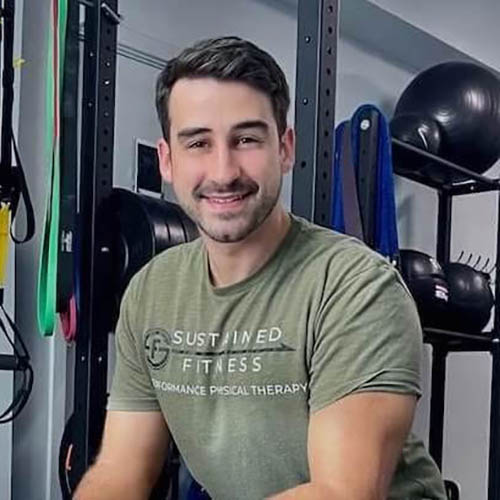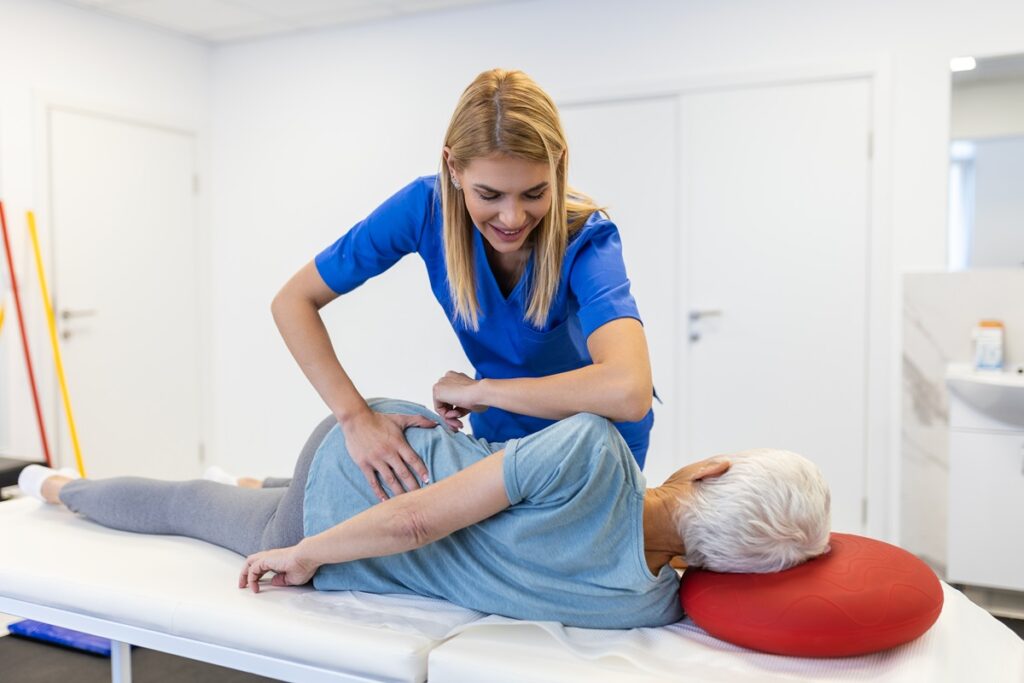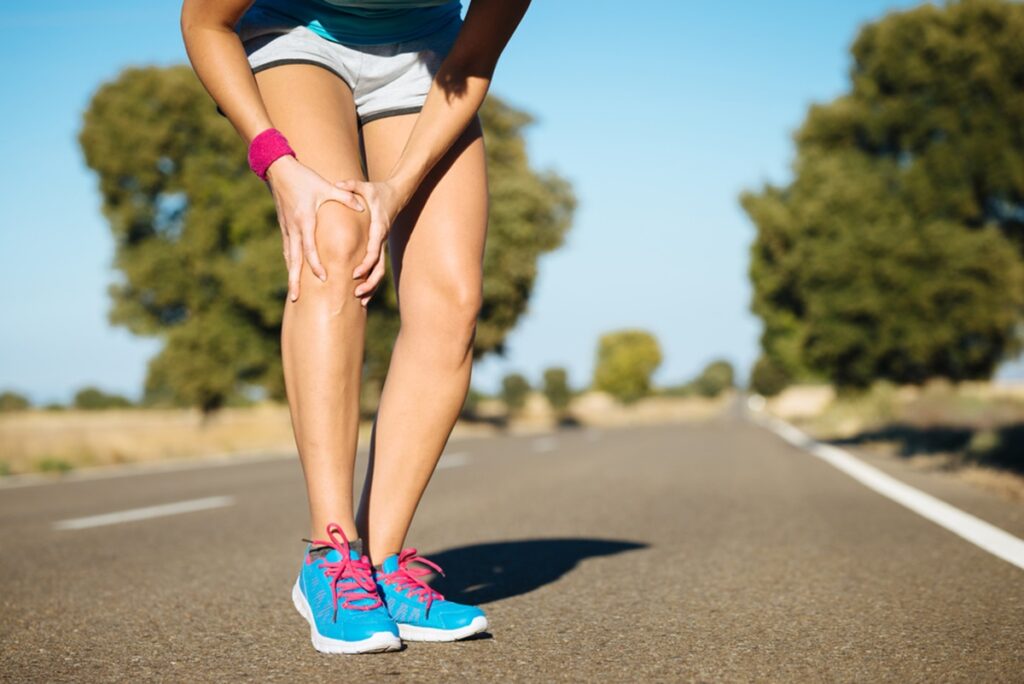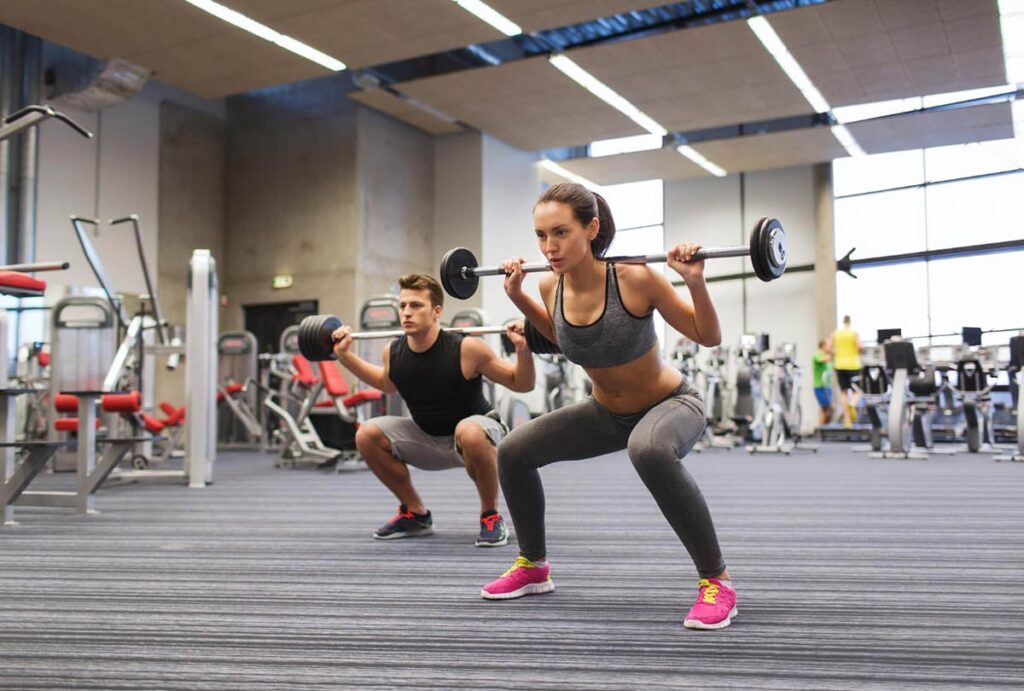Knee pain when squatting can feel frustrating, especially if it stops you from training or doing everyday activities. Whether it's a dull ache or sudden sharp knee pain when squatting, this guide will help you understand the root cause and how to fix it. Sustain Physical Therapy & Performance is here to guide you through …
Knee Pain When Squatting: Why It Happens & How to Fix It
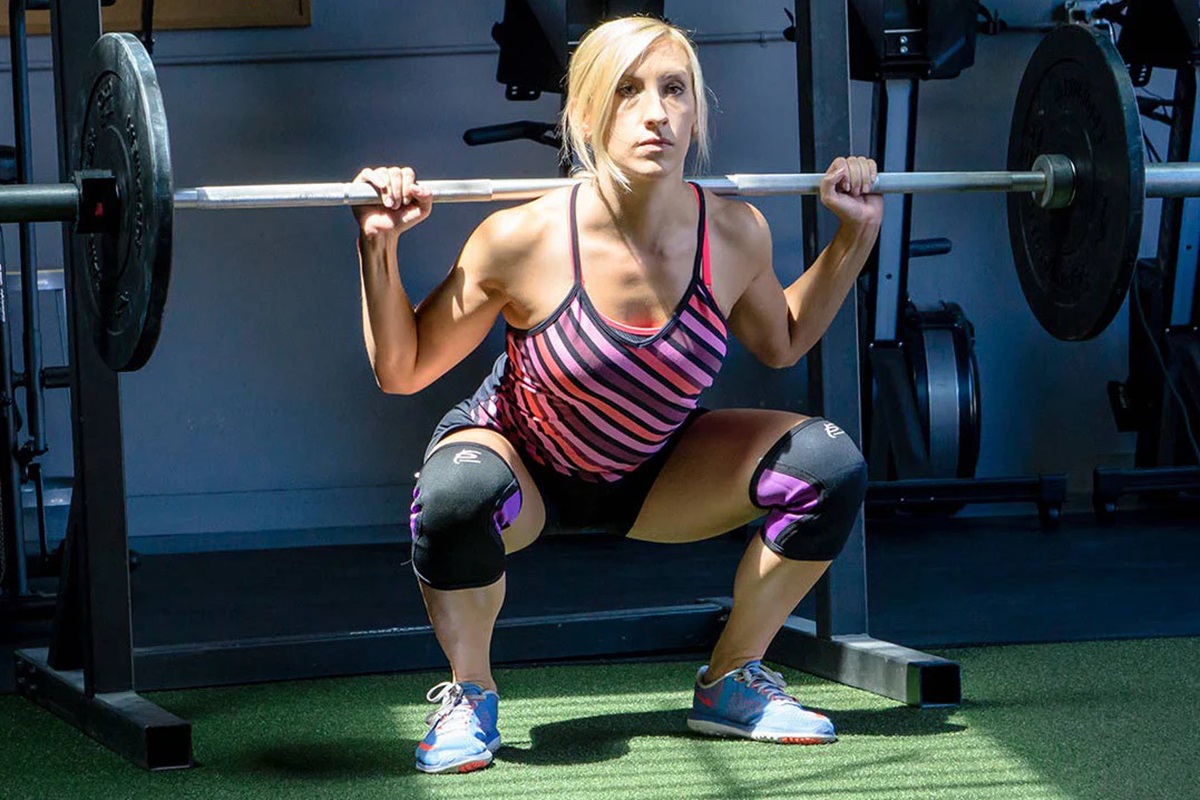
Knee pain when squatting can feel frustrating, especially if it stops you from training or doing everyday activities. Whether it’s a dull ache or sudden sharp knee pain when squatting, this guide will help you understand the root cause and how to fix it. Sustain Physical Therapy & Performance is here to guide you through proven solutions tailored to your body and goals.
What Causes Sudden Sharp Knee Pain When Squatting
Knee pain when squatting can happen for many reasons, but understanding the cause is the first step toward lasting relief. Sudden sharp knee pain when squatting usually suggests an acute injury or trauma that needs careful attention. Sustain Physical Therapy & Performance provides expert assessments to uncover the exact cause using methods like physical examination, x-ray, or MRI scan.
Sudden vs. gradual knee pain—what’s the difference?
Sudden sharp knee pain when squatting often points to a specific injury or event, such as a meniscus tear or patellar tendonitis. Gradual pain usually builds over time due to overuse, improper squatting form, or muscle imbalances. Identifying if your pain is sudden or progressive helps tailor the best physical therapy for knee pain.
Common culprits: tendon strain, cartilage damage, joint misalignment
Conditions like cartilage tear, patellar tendonitis, quadriceps tendonitis, or joint misalignment can lead to sharp knee pain. Additional causes include iliotibial band syndrome, baker’s cyst, or knee bursitis. At Sustain Physical Therapy & Performance, a thorough physical examination and imaging can help rule out bone spurs or osteoarthritis.
The role of poor squat mechanics and overuse patterns
Overuse injuries and improper squat form are common contributors. Constant squatting with weak glutes, instability, or poor ankle mobility shifts pressure to your kneecap and supporting structures. Patellofemoral pain syndrome and runner’s knee often result from repetitive strain due to these issues.
Why Do My Knees Hurt When I Squat?
If you’re asking “why do my knees hurt when I squat?” you’re not alone. This question is one of the most searched by active adults and gym-goers experiencing discomfort. Fortunately, there are targeted solutions to address the real causes of knee pain when squatting.
Roughly one in four adults experiences knee pain, and the condition has surged by nearly 65% over the past two decades. It’s one of the top reasons people visit primary care providers, with millions seeking help each year. This increase highlights the need for accessible, effective solutions like physical therapy for knee pain.
Muscle imbalances and joint instability
Weak glutes, underactive hamstrings, or a dominant quadriceps group can cause the knees to track improperly. These muscle imbalances and lack of control result in added strain on the joints and tendons. Strengthening exercises and glute strengthening are often prescribed in physical therapy for knee pain to create stability.
Common diagnoses: patellar tendonitis, runner’s knee, IT band syndrome
Patellar tendonitis causes sharp pain at the front of the knee, especially during squats. Runner’s knee and iliotibial band syndrome typically result in aching around the kneecap or lateral knee. These conditions respond well to targeted therapy including hip abductor strengthening, hamstring stretches, and knee mobility exercises.
Mobility restrictions in hips, ankles, and thoracic spine
Limited range of motion in the hips and ankles alters squatting position and increases joint strain. Poor ankle mobility and tight hip flexors force the knees into compensatory patterns. Mobility drills focused on ankle dorsiflexion, thoracic extension, and hip rotation can restore proper squat form.
Immediate Actions to Reduce Pain and Inflammation

Early intervention is key when managing knee pain when squatting. Whether it’s a minor strain or sudden sharp knee pain when squatting, taking the right steps early can prevent chronic injury. Sustain Physical Therapy & Performance offers expert strategies that reduce inflammation and promote healing.
Movement modifications to reduce joint loading
Modify your squatting position by using supportive footwear, knee pads, or the high-heel squat trick to ease pressure on the knees. Mini squats and box squats help you stay active without overloading injured tissues. Incorporating mirror feedback can help correct alignment in real-time.
Pain management tools: ice, compression, mobility drills
Use the R.I.C.E. method—rest, ice pack, compression bandage, elevation—in the first 24-72 hours. Heat and massage can be added later to improve circulation. Over-the-counter drugs or non-steroidal anti-inflammatory drugs may also help reduce swelling and discomfort.
Red flags: when to seek expert care quickly
Persistent swelling, bruising, or locking of the joint after squatting should prompt a visit to a physical therapist. Conditions like patellofemoral pain syndrome, quadriceps tendonitis, or a cartilage tear may require imaging such as MRI or arthroscopy. Request appointment with Sustain Physical Therapy & Performance to start a customized recovery plan.
Physical Therapy for Knee Pain: The Expert Approach
Physical therapy for knee pain involves more than just rest and ice. At Sustain Physical Therapy & Performance, treatment is tailored using advanced assessments and proven techniques. Whether you experience chronic pain or sudden sharp knee pain when squatting, expert care can make all the difference.
How Sustain PT & Performance performs biomechanical assessments
Our team uses a thorough physical examination, including video squat analysis, joint testing, and range of motion assessments. If needed, imaging like x-ray or MRI scan is recommended. These assessments help identify issues like improper squatting form, joint misalignment, and muscle imbalances.
Individualized treatment: strength training, motor control, mobility
Each program includes strengthening exercises targeting glutes, quads, hamstrings, and hip abductors. Motor control drills and knee mobility exercises help retrain movement patterns. Custom orthotics or taping may be used to support the kneecap and reduce patellofemoral pain syndrome symptoms.
Real-time guidance and app-based programming to support recovery
We provide movement snacks and rehab routines via our app for ongoing guidance outside the clinic. Real-time feedback ensures exercises are performed correctly, reducing the risk of reinjury. This approach supports long-term success through habit-building and consistent support.
Fixing Squat Mechanics to Eliminate Knee Pain
Fixing your squat form is essential to solving knee pain when squatting. Squat mechanics affect how forces are distributed across the joints. Sustain Physical Therapy & Performance specializes in identifying and correcting movement faults that contribute to pain.
Identifying common squat faults: valgus collapse, heel lift, hip tuck
Valgus collapse (knees caving in), heel lift, and excessive hip tuck are signs of poor form and weak glutes. These faults put extra pressure on the patellar tendon and surrounding structures. Using tools like mirror feedback and video analysis helps spot and correct these errors.
Position corrections: stance, depth, tempo
Finding the right stance width, using controlled depth, and modifying tempo reduce joint irritation. Combining these corrections with ankle mobility work and glute strengthening enhances squat performance. Proper warm-ups prepare the joints and muscles for safer squatting.
Functional training progression for long-term movement quality
Gradual increases in load, reps, and complexity help build resilience. Knee strengthening exercises include split squats, step-downs, and banded drills. Sustain PT programs reinforce good habits that prevent re-injury and promote healthy movement patterns.
Top PT-Prescribed Exercises to Restore Pain-Free Squatting
Recovery from knee pain when squatting relies on smart exercise selection. Sustain Physical Therapy & Performance customizes exercise routines that restore mobility, stability, and strength. These movements are tailored to reduce pain while reinforcing optimal squat mechanics.
Glute and hamstring activation drills
Exercises like glute bridges, clamshells, and banded RDLs improve glute engagement and hamstring balance. Strong glutes reduce the burden on the knees by stabilizing the pelvis. Glute strengthening is a cornerstone of physical therapy for knee pain.
Closed-chain quad strengthening without joint irritation
Mini squats, wall sits, and step-ups target the quads without stressing inflamed structures. These closed-chain exercises are ideal for cases involving patellofemoral syndrome or osteoarthritis. Emphasis on form ensures that quad activation doesn’t aggravate the joint.
Mobility routines for ankle dorsiflexion and hip external rotation
Ankle mobility drills like wall dorsiflexion and hip openers such as 90/90 stretches improve joint range. These routines enhance alignment during squats, reducing compensation and irritation. Consistent mobility work is critical for sustainable squat performance.
Preventing Knee Pain from Returning

Avoiding recurring knee injuries requires ongoing maintenance and smart training strategies. Sustain Physical Therapy & Performance provides long-term solutions to prevent setbacks. From load management to strengthening routines, prevention is a key part of recovery.
Load management principles for active adults
Load management involves gradually increasing workout intensity and tracking recovery. Avoiding sudden spikes in volume helps protect against tendonitis and bursitis. Sustain PT coaches educate clients on how to plan training to avoid flare-ups.
Monitoring technique under fatigue
Fatigue often leads to squat form breakdown, increasing injury risk. Using mirror feedback and video recording helps maintain proper mechanics during hard sessions. Awareness and consistency in technique can prevent patellofemoral pain syndrome.
How Sustain PT’s programming keeps athletes stronger, longer
Our programming includes reassessments, mobility retesting, and real-time updates. You get expert support to adjust routines based on how your body responds. This long-term approach ensures continued progress and reduced injury risk.
Get Help from a Doctor of Physical Therapy
When you’re ready to take control of your knee pain when squatting, expert help is available. At Sustain Physical Therapy & Performance, our Doctors of Physical Therapy are ready to guide your recovery. Request appointment today to begin a path toward stronger, pain-free movement.
What to expect from a discovery call at Sustain PT & Performance
On your call, we’ll discuss your symptoms, goals, and training background. We’ll explain how physical therapy for knee pain works and answer your questions. From there, you can choose between in-person visits or virtual support.
In-person and remote options for knee pain treatment
Located in Boston, Sustain Physical Therapy & Performance offers one-on-one sessions and digital coaching. Whether you need help with a baker’s cyst, arthritis, or meniscus tear, we tailor care to your needs. Remote options include app-based routines and telehealth support.
Start your assessment to resolve pain and improve performance
We use physical exams, range of motion tests, and imaging if needed to identify what’s causing your pain. From patellar tendinitis to osteoarthritis, you’ll get a plan that works. Request appointment and take the first step toward better movement and pain-free squatting.
Conclusion
The rise in knee replacement surgeries across the U.S. has been linked to a growing aging population and higher obesity rates. These factors increase joint stress, especially during weight-bearing activities like squatting. This makes early intervention and proper joint care more critical than ever.
Knee pain when squatting doesn’t have to be your new normal. With expert assessment, personalized training, and proper movement patterns, you can get back to pain-free squats. Sustain PT & Performance is here to help you move better, stay stronger, and prevent pain from returning.
FAQs
What is the figure 4 test for knee pain?
It’s a mobility screen that checks hip and knee joint flexibility. It can help identify tightness contributing to pain. Often used in physical therapy to screen for patellofemoral pain syndrome or hip-related causes.
How do you fix knee pain when squatting?
Correct your mechanics, strengthen weak muscles, restore mobility, and get a movement assessment from a physical therapist. Request appointment with Sustain Physical Therapy & Performance to build a plan customized for your needs. Exercises like glute strengthening, ankle mobility drills, and taping can offer quick relief.
How do I strengthen my knees for squats?
Start with glute, quad, and hamstring exercises that don’t aggravate your joints. Add resistance slowly and focus on proper technique. Knee strengthening exercises combined with load management and physiotherapy can help build lasting durability.
Dr. Adam Babcock PT, DPT
“We Help Active Adults Quickly Recover From Pain Or Injury So They Can Stay Active, Get Back To What They Love To Do, and Do It For Decades”

